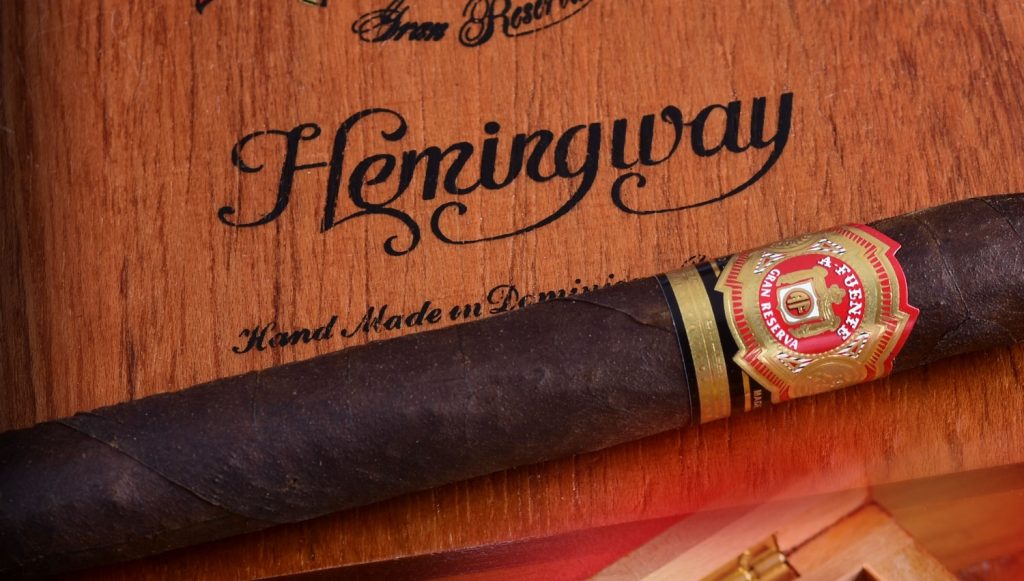Blending smoking and reading began in Cuba during the early days before iPhones and the internet. Hell, it was even before the radio, but entertainment still had to come in some form. In the 1840s, your average cigar roller couldn’t pop in earbuds and listen to a podcast or their favorite playlist. To combat the monotony of long hours of repetitive work, cigar rollers often employed a reader (El Lector) to stimulate their minds while their hands toiled away, making premium cigars. Lectors, perched on platforms so the entire factory could hear, read aloud from novels and newspapers and are as much a part of cigar history as expert craftsmanship, ornate box designs, and distinctive bands.
Perhaps smoking and reading date back to the tradition of El Lector reading aloud from Les Miserables and The Count of Montecristo. Or perhaps it is the cerebral nature of sitting down with a good stick, but some of the most iconic cigar lines owe their name to some of literature’s best.
What’s in a Cigar Name?
Everybody knows Shakespeare’s star-crossed lovers, but legend has it, when Jose ‘Pepin’ Rodriguez Fernandez acquired the Romeo y Julieta line in the 1870s, he was more than a little obsessed with Shakespeare’s tragedy. On one of his many visits to Europe, Rodriguez attempted to purchase the Palazzo Capuleti in Verona. However, Italian authorities unceremoniously refused his idea of turning Juliet’s famed palazzo into a cigar lounge. Yet, the name and line have long endured.
Shakespeare’s lovers are perhaps the best known literary cigar pairing, but sharing a premium cigar is more often about friendship and enjoying cigar lifestyle than romance. And it was probably the social nature of smoking and the loyalty of Don Quixote’s squire that inspired Don Emilio Ohmsted when he established the Sancho Panza line in 1848. Cervantes Don Quixote is not only the greatest Spanish language novel of all time, it is a testament to friendship. Honest and true.
The Tradition of Smoking and Reading
Montecristo, established in the 1930s, owes its name to Alexander Dumas’ classic novel and famous count. This distinguished Cuban line dates to the days when rollers held boredom at bay by listening to Dumas’ powerful story of revenge.
Hoya de Monterrey established its Honduran classic, Excalibur, during the 1970s. The Excalibur honors the Arthurian legends and the famed sword in the stone.
Of course, we can’t mention smoking and reading in the same breath without mentioning Ernest “Papa” Hemingway. Since the 1980s, Arturo Fuente has been producing the Hemingway line in honor of the Nobel Prize-winning novelist. His reputation has seen its ups and downs in the hundred years since he began writing. Yet, he remains one of the most influential and mythic figures of the 20th century.
Ken Burns’ recent PBS documentary paints a more nuanced portrait of Hemingway. It shows that like the Cameroon-wrapped line that bears his name, Hemingway; the man was more complex than the myth. His mornings may have been spent writing, but his afternoons and evenings were for living. Whether aboard his beloved fishing boat “Pilar” or sidled up on a stool at Sloppy Joe’s in Key West, Hemingway embodied what it once meant to be a man and the meditative pace of cigar life. It’s no wonder his image is inseparable from cigars. Additionally, the 22 years Hemingway lived in Cuba were the longest he ever lived anywhere.
Fuente’s early 2000s limited edition cigar, The God of Fire, is an ode to boldness. It honored the Greek Titan, Prometheus. Had Prometheus not stolen fire from the gods and gifted it, we mortals and cigar lovers would be in trouble.
The Final Word on Smoking and Reading
Don’t think too hard about the name of your next premium cigar. Taste around and find what you like, but a good name goes a long way. A good cigar brand’s age-old connection with smoking and reading. Remember, the next best thing to a great scotch is pairing a premium cigar with a good friend and a story.
Photo credit: Arturo Fuente Cigar Co.


